I have a dataframe with some NaN values in my s_x columns. If NaN values exist in them, I want them to be in the last columns.
Example: Given values in the s_x columns of [Nan, 1, Nan, 2] I want the values to shift left over the columns to result in [1, 2, NaN, NaN]
Example 2:
My current solution is very slow as I:
- iterate over the rows
- transform the
s_xvalues into a list - remove
NaNvalues - left-pad the list with
NaNvalues - write it back into the dataframe
How can I improve on the function below? The order of values (low to high) needs to remain the same. Every value is found only once in the s_x columns of a row.
I know that "leaving the pandas-logic" by parsing to a list and back is problematic concerning performance and was thinking of trying to do it with a lambda function, but didn't get anywhere with it.
My current code as a minimal working example:
import pandas as pd
import numpy as np
def shift_values(df, leading_chars):
"""Shifts all values in columns with common leading chars to the left if there are NaN values.
Example: Given a row of [NaN, 1, NaN, 2]
the values are shifted to [1, 2, NaN, NaN]
"""
cols = [c for c in list(df.columns) if c[:len(leading_chars)] == leading_chars]
for index, row in df.iterrows():
# create list without NaN values
values = [v for v in row[cols] if not pd.isna(v)]
# pad with NaN to get correct number of values again
values += [np.nan] * (len(cols) - len(values))
# overwrite row values with modified list
for i, c in enumerate(cols):
row[c] = values[i]
# overwrite row in the dataframe
df.iloc[index] = row
return df
mylist = [["key", "s_1", "s_2", "s_3", "s_4"],
[1, np.nan, 1, 2, np.nan],
[1, 10, 20, 25, np.nan],
[1, 10, np.nan, 25, np.nan]
]
df = pd.DataFrame(mylist[1:], columns=mylist[0])
print("______ PREVIOUS ______")
print(df.head())
df = shift_values(df, 's_')
print("______ RESULT ______")
print(df.head())
